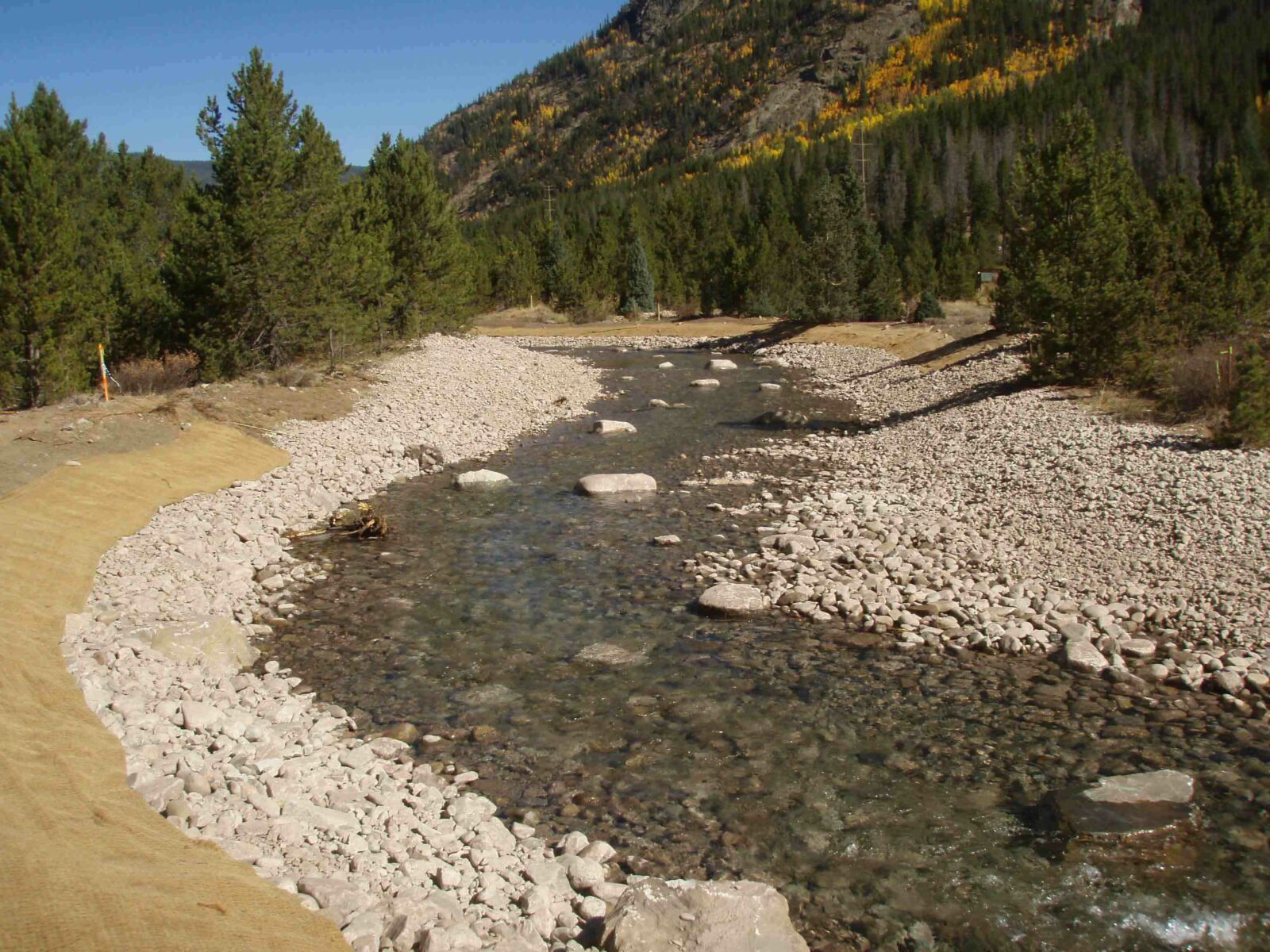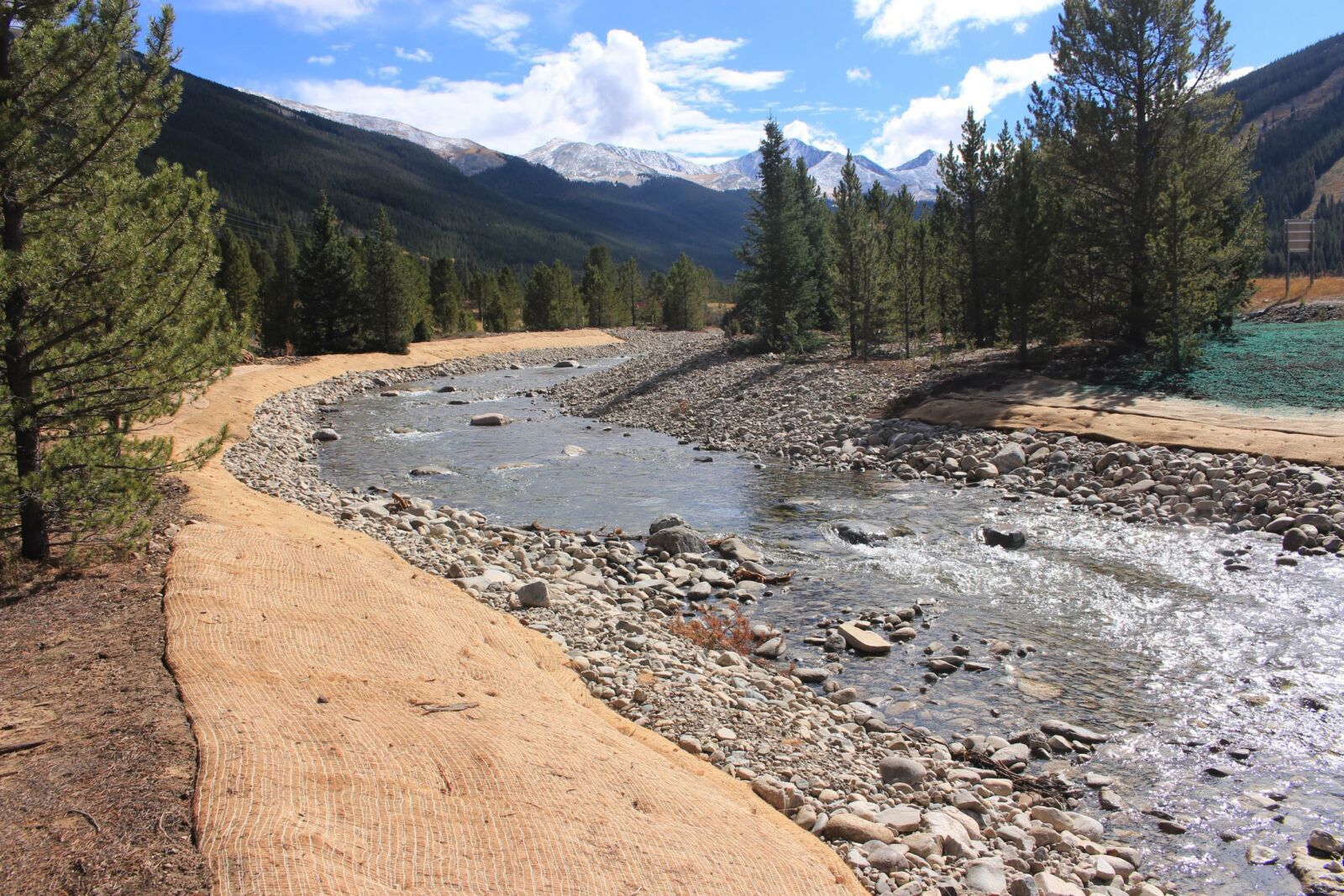For thousands of years on the White River National Forest, Tenmile Creek flowed down from the mountains, slowed across Wheeler Flats, and continued to the Blue River. Then settlers discovered gold and then molybdenum in the mountains. They needed roads and rail. And then skiers arrived.
During all this development, Tenmile Creek suffered. The result was a channelized stream tucked next to Highway 91.
The stream had
- excessive mid-channel sediment deposition,
- eroded banks,
- a lack of instream bed form diversity and
- limited flood plain connectivity and riparian habitat.

The restoration goals include recreating a sinuous stream channel with bends, banks, gravel bars and pool-forming boulder clusters—all resembling the features that existed historically on the site.
In 2013, Blue River Watershed Group restored the first 1,600 feet of stream and in 2015 the final 1,200 feet. In the 2015 phase two restoration, we created a single-thread channel. We also added five new meander bends to the channel alignment. To provide velocity variation and induce/maintain scour, we excavated small pools into the new channel and placed boulder clusters.
We restored or created a variety of habitats: stream channel, riparian, wetland and floodplain as well as off-channel wetland. In addition, the project restored riparian banks and non-wetland floodplain habitat. Finally, the restoration moved the stream further from Highway 91 and reduced runoff from the road into the stream.

We initiated the project on August 31, 2015 with equipment mobilization and site preparation. Major excavation began on September 1 and continued through September 25, 2015. All seeding, erosion control blanket installation and hydro-mulch was completed by October 7, 2015. Final shrub planting is scheduled for spring of 2016 following peak runoff.



Ecological Resource Consultants, Inc. was the primary contractor for the project and provided these pictures.
The project was managed by the Blue River Watershed Group in cooperation with the US Forest Service. Funding for the project came from the National Forest Foundation (Ski Conservation Fund), the Colorado Water Conservation Board and Climax Molybdenum Company. In-kind support came from Copper Mountain resort and the Friends of the Dillon Ranger District.

